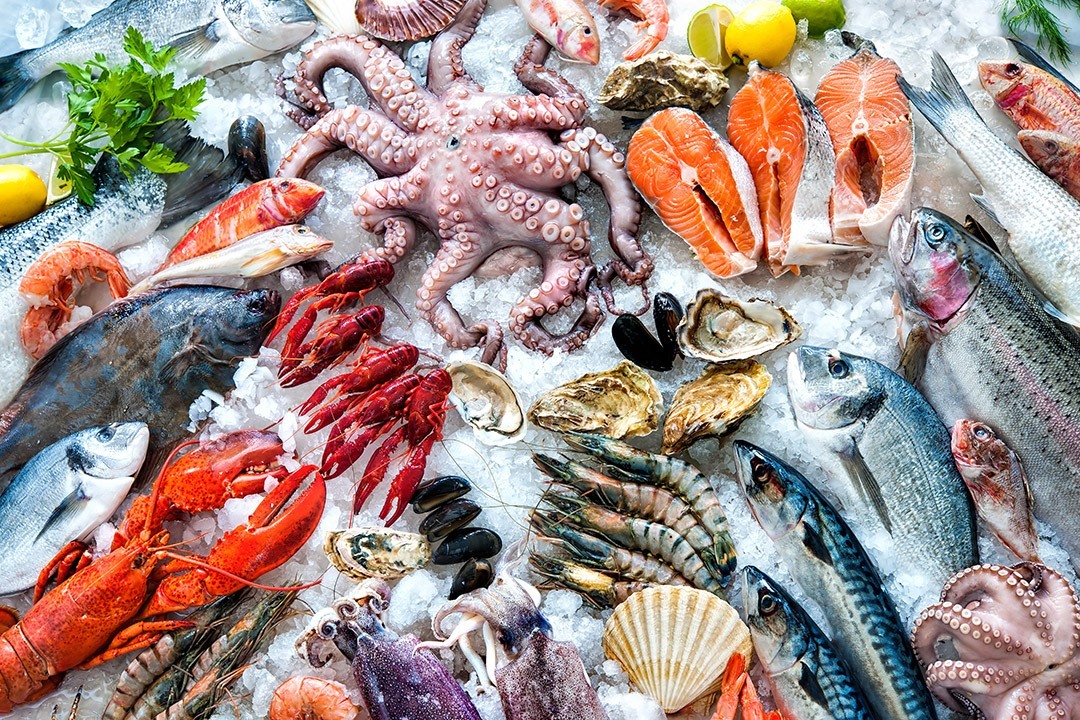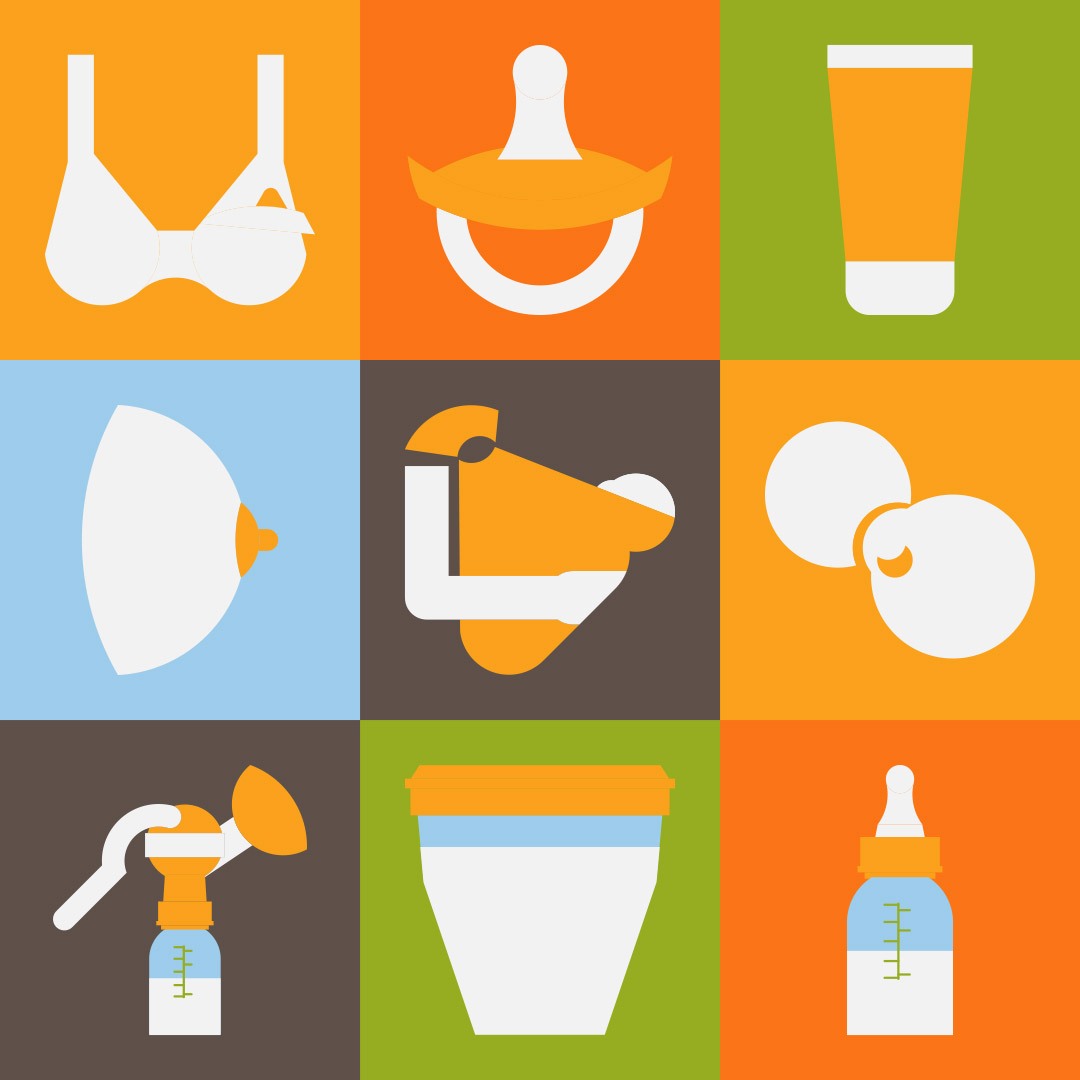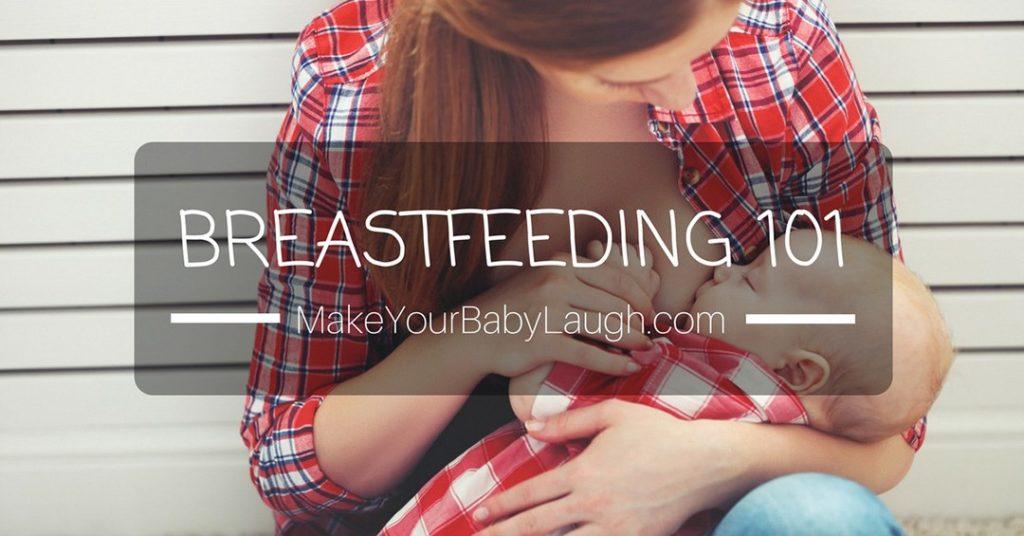Breastfeeding 101 – What You Need To Know
There is a lot to discover when it comes to nursing your baby. Learn the benefits of breastfeeding, health and nutrition for breastfeeding moms, how to breastfeed, and more. Make sure that you also read our section about common problems of breastfeeding, pumping and storing breast milk, and common questions about breastfeeding.
More...
1. What Is Breastfeeding?

Breastfeeding is one of the most powerful human interactions. It gives your baby the best nutrition and protection from various illnesses. Breastmilk is needed for the first six months to assist babies’ development as it contains a mix of protein, vitamins, antibodies, and fats that newborns need to grow. Many mothers continue to provide breastmilk after six months in addition to other nutritious foods.
Although there are many approved infant formulas with compounds, such as lactoferrin, fatty acids, nucleotides, and oligosaccharides, breast milk has the best effects on the immune response of infants. All mothers should be supported and encouraged to breastfeed for at least six months to provide their babies the best nutrition.
Breastfeeding your newborn takes knowledge and a lot of practice, but it does more good than you may think. Babies who are given breastmilk for the first six months have lower risks of developing respiratory problems, ear infections, and diarrhea.
2. What Are The Benefits Of Breastfeeding?

In some studies, breastfeeding has been associated with higher IQ stores. Direct skin contact, eye contact, and physical closeness form a bond that makes your baby feel secure and comfortable.
For Moms
For Babies
3. How To Breastfeed?

A mother breastfeeding her baby is one of the simplest and most beautiful representations nature could make. Breastfeeding is a natural activity that can still be difficult to a new mom. For some women, breastfeeding can be a challenge for the first few weeks.
Success comes with a combination of knowledge of essential skills, motivation, and a lot of practice. Here’s a step by step guide to help you on how to breastfeed:
Step 1: Hold your baby snuggly behind her shoulders, supporting the head with one or two fingers. Avoid placing your whole hand behind the head as she will need space for the third step.
Step 2: Position your baby on her side so that her body is facing towards you. Her belly should also be touching yours. While there are many different types of position, the most ideal is a skin-to-skin contact for the first few months.
Step 3: Let your baby’s head to tip back just as you do when drinking from a glass or cup.
Step 4: Offer your nipple to your baby, pointing at her nose. Pull your child in so that her jaw is touching your breast below the nipple. Your baby will open her mouth wide and latch on.
Step 5: When your baby’s mouth opens to latch on, help her scoop by pulling her onto your breast. Make sure that she takes at least 1 ½ inches of the areola.
Your goal is to let your nipple reach your infant’s soft palate and not the hard palate. The soft palate is further back where the molars appear while the hard palate is behind the front teeth.
Step 6: If you feel discomfort or pain that lingers for more than 30 seconds, pull down in the corner of your child’s mouth using your pinky finger to detach the suction and try again.
Step 7: Once you have achieved a good latch, tuck her bottom closer to your body. This position will make her nose away from your breast, helping her breathe better.
Breastfeeding should not be uncomfortable or painful. You may not get it right at first, but you and your little one can work on it together. Create a nursing schedule to make sure that your baby is getting enough milk. This will also help your body produce enough milk supply.
4. Health And Nutrition For Breastfeeding Moms

One of the fascinating things about breastmilk is that it can provide your baby’s nutritional needs. However, if you are not eating healthy or your diet is very low in calories, it can affect the quantity and quality of milk.
Nutrition For Breastfeeding Moms
Many breastfeeding mothers feel extra hungry, which is normal as the body works to produce milk for the baby. Eating smart is required to achieve successful breastfeeding sessions. You will need to continue eating similar to how you were eating during pregnancy, but add extra 200 calories per day.
Protein
Babies need a lot of protein, so moms will need to include foods rich in protein into their diet to meet their babies’ needs. This essential nutrient is vital for your baby’s growth, cell maintenance, and repair. You may need to take 67g of protein a day. Good sources of protein include:
Note: Avoid tilefish, swordfish, shark or king mackerel as they contain high levels of mercury.
Iron
The amount of iron needed while nursing depends on your age. Mothers who are ages 18 and below need 10 mg of iron a day. Breastfeeding moms over 19 and above are suggested to take 9 milligrams. This mineral helps in cell development, muscle function, and transporting oxygen. Good sources of iron include:
Folate
Nursing moms are required to consume 450 micrograms of folate per day, but you may need up to 500µg. Folate is a B-vitamin that is needed for baby’s growth and development. Excellent sources of folate include:
Calcium
The amount of calcium recommended for breastfeeding women is 1,000 to 1,300 mg per day. This mineral is important for both mothers and babies. Your body needs to make up for the calcium lost during pregnancy. The best sources of this mineral are:
Zinc
Zinc is important for your baby’s immune system and cell development. Breastfeeding women are recommended to take 12 milligrams daily. Good sources of this mineral include:
Vitamin C
Vitamin C plays a role in cell growth and repair, making it one of the essential nutrients for growing infants. It helps strengthen their immune system and aid the growth of bones. Nursing mothers should get 115 to 120 milligrams of this vitamin per day. Great sources of vitamin C include:
Vitamin A
Vitamin A helps your baby prevent infections. It is also vital for proper development. Good sources of this vitamin are:
It is important for nursing mothers to maintain a proper diet to increase milk supply and gain essential nutrients.
Foods To Avoid While Breastfeeding

Just like in pregnancy, there are certain foods and drinks that you should not eat while breastfeeding. In addition to alcohol, here is a list of what to avoid.
1. Caffeine

You may need to drink your coffee to stay awake while attending the needs of your baby. However, it is important to refrain from consuming caffeine as it can make its way to your breasts and be transmitted through your breastmilk. Babies are not able to process and excrete it, which may lead to trapped gas, irritability, and sleeplessness.
If you are preparing for your baby to sleep, wait until your little one is asleep before having a cup of coffee.
2. Chocolate
There is no need to get rid of chocolate completely but keep in mind that it also contains caffeine. Always observe the behavior of your baby after eating chocolate. If she has a runny stool or becomes fussy after you eat chocolate, this means that you need to eliminate or reduce your chocolate intake.
3. Peanuts
For those who have a history of peanut allergy in the family, it is best to avoid this food while breastfeeding. The allergic compounds can wind up in breastmilk. If you are uncertain whether your little one has an allergy, watch for hives, rashes or wheezing. These are the common signs of allergic reactions.
4. Fried And Fatty Foods
Breastfeeding mothers need more calories as they need to meet the daily requirements of their babies as well. While your body needs fats, it is important to avoid saturated fats and other foods high in trans fats as this may cause your baby to become obese.
5. Dairy
Dairy products are one of the common issues for breastfed infants. If your child has sleep issues, eczema or other skin problems, or she becomes fussy after breastfeeding, this may be a sign to eliminate some dairy products from your diet.
It may be difficult to avoid all dairies, but you can try to have a dairy-free diet for a few weeks and observe the behavior of your baby.
6. Garlic

We all know that garlic offers numerous health benefits. However, if your baby always pulls off during nursing sessions and makes faces, think if you previously ate some pieces of garlic. Babies do not like the taste of garlic yet, so it is best to avoid eating them while breastfeeding.
7. Peppermint Or Parsley

While some herbs can increase your milk supply, parsley and peppermint are not one of them. These two can reduce your breastmilk supply and may cause your baby to be hungrier than normal. Small quantities should not be an issue, but avoid consuming these herbs in large amounts, such as tea and dips.
8. Wheat
Painful tummy, fussiness or bloody stools are often caused by gluten intolerance. Like peanuts and dairy products, following an elimination diet allows you to determine if wheat is the culprit. Some parents eliminate all foods that are causing problems and reintroduce them slowly.
9. Fish
You do not have to eliminate fish completely, but it is important to be selective when eating seafood. Some fish like shark, swordfish, tilefish, ahi tuna, marlin, king mackerel and bigeya tuna are high in mercury.
10. Citrus Fruits
Your baby’s gastrointestinal tract is still immature, and citrus fruits may result in irritation. Eating too much of lemons, sweet lime and oranges may cause your baby to develop diaper rash, fussiness or spitting up.
Safe Medications While Breastfeeding

Many breastfeeding mothers take medication. Although many drugs are safe to use while breastfeeding, it is important to consult a doctor first before taking over-the-counter drugs or any kind of medication.
The effect of medication on babies depends on many factors, such as the dose, the way medicines are taken, and the type of medicine. Some possible effects a baby may experience include vomiting, diarrhea, and difficulty sleeping. Also, some medications may also lower breastmilk supply.
With your doctor’s guidance, here is a list of medications found to be safe to take while breastfeeding.
Pain relievers
Decongestants
Antihistamines
Constipation medications
Antimicrobial medications
Birth control pills
Antidepressants
Gastrointestinal medications
If you need to take medication while breastfeeding, it is best to seek guidance from a healthcare provider. Avoid taking unnecessary medications, such as high-dose supplements or herbal medications to minimize your child’s exposure.
When taking medication, check your baby’s behavior for any unusual symptoms, such as fussiness, rashes, difficulty sleeping, and loss of appetite. Call her doctor if you notice any of these changes.
5. Breastfeeding: Common Problems

Breastfeeding is the best way to feed your baby as it protects both infant and mother from different types of health issues. However, many women discontinue breastfeeding before finishing the six-month recommendation because of common problems that interfere with their ability to nurse properly.
1. Painful Nipples
When you first start your breastfeeding session, it is normal for nipples to feel sore. The latching pain that lasts longer than one minute is usually caused by wrong positioning. It can also be caused by suction trauma.
2. Cracked Nipples
Many breastfeeding moms experience cracked nipples and can result in irritation, soreness, and bleeding during breastfeeding. Other possible causes could be breast engorgement, use of breast pumps improperly, poor positioning, inexperience, semi-protruding nipples, and light pigmentation.
If your child has an oral yeast infection (thrush), she may pass it on your nipples. Signs of thrush in nipples include red, itchy, shiny, and painful nipples during or after breastfeeding.
3. Inverted Or Flat Nipples
Most nipples protrude, but there are some variations in shape and size that make it hard for mothers to breastfeed successfully. A baby must be able to suck on the nipple to get the milk. To determine if you have inverted or flat nipples, perform a “pinch” test.
To perform this, hold the edge of the areola using your index finger and thumb. Press in firmly but gently about an inch behind and see if your nipple will protrude. If it erects, you have a flat nipple. If it disappears or retracts, it is really inverted.
If you have an inverted or flat nipple, visit a lactation consultant for simple tips on how to breastfeed successfully.
4. Clogged Ducts
When you notice a hard lump or your breasts become painful to touch, your milk is not draining completely. Stress is also one of the factors that affect the flow of breastmilk. If you start to feel like having a fever, visit your doctor as that can be a sign of infection. Some causes of clogged ducts include:
5. Mastitis/Breast Infection
An infection may occur when bacteria, usually from a baby’s mouth, enter through a cracked nipple after nursing. Infections usually appear one to three months after delivery. It may cause redness, pain, and warmth of the affected area. If also you experience fatigue, fever and flu-like symptoms, visit your doctor immediately for proper diagnosis and treatment.
6. Breast Engorgement
Breast fullness happens when your breasts become full of milk. However, breast engorgement occurs when the blood vessels in the breasts have become clogged. The fluids in the breasts are trapped, making the area painful, hard, and swollen. Breast engorgement is often caused by:
7. Thrush
Thrush in babies can occur after treatment with antibiotics or when the immune system is weaker. This infection can also spread to your nipple. If not treated immediately, you and your baby can pass the fungi to each other and prolong the healing process.
Your doctor may prescribe an oral fungal medication that may take about two weeks to get rid of the infection. Your baby’s provider may also recommend giving your child acetaminophen to alleviate the pain.
8. Low Milk Supply
Breastfeeding production is controlled by the process of supply and demand. It is natural for mothers to worry about making enough breast milk for your baby. Some of the common causes of this problem include:
9. Stress
When you are stressed or anxious, it can affect your let-down reflex. That is the body’s natural way of releasing milk, which is automatically triggered when you nurse your baby. Some moms describe it as pins-and-needles sensation as the milk makes its way through the ducts.
This reflex can also be triggered when you think of your baby or when you hear her cry. However, stress can prevent you from releasing the milk properly. It is best to stay calm and relaxed before and while breastfeeding to let your milk flow easily.
10. Baby Sleeping While Nursing
Falling asleep while breastfeeding is common as it makes your little one relaxed. However, this may keep your baby from getting enough nutrients. As much as you want your baby to sleep peacefully, you may need to wake her up so she can gain weight steadily.
6. Breast Milk: Pumping And Storing

Whether you want your partner to help with feedings or you are going to work, you can pump and store your milk to make sure that there is enough for your baby even if you are away. You can pump between feedings or right after your child eats. You may also prefer pumping from one breast while nursing your baby from the other.
A. Pumping Breastmilk
You may not get a lot of milk during your first try, but it will gradually increase as you pump regularly. You will start producing more breastmilk when you pump more often. Make sure that you also stay hydrated.
Wash Your Hands
Before you start pumping breastmilk, it is important to wash your hands. Massage both breasts to stimulate milk flow.
Start With Low Suction
Pump your breasts at the same time using low suction. Then, you can increase it gradually to a comfortable suction. Try squeezing your breasts softly and let go to release more milk out. Continue doing this until the flow of milk slows down to droplets.
Massage Your Breasts
Give your breasts another massage, focusing on areas that feel hard or full.
Express Breastmilk By Hand
Express your milk by hand into the pump’s bottle shield. You can pump one breast or two at a time and see which way you can express more milk.
Pump Regularly To Establish Milk Supply
Your breasts will produce as your body recognizes the need for it. Consider pumping regularly to ensure that your baby won’t run out of nutritious milk while you are away.
Pumping your breastmilk should not hurt. If you experience difficulty or pain, visit a lactation consultant for additional assistance.
B. Storing Breastmilk
You can store pumped breastmilk in the freezer, refrigerator or insulated cooler bag. There are many breastmilk storage bottles that you can use for storing milk, such as:
It is best to avoid using plastic sandwich bags or thin disposable bottle liners in the freezer as these items tear apart when frozen. After you pump the milk, cool it down as soon as possible. Store them in a cooler or refrigerator for immediate use. You can also freeze the milk to build a supply for your little one.
When storing breastmilk, consider labeling the container with the date you pumped the milk. Use a non-toxic marker or a sticky label. This allows your partner or guardian to determine which milk to use first while you are away.
Keep in mind that you cannot re-freeze breastmilk, so store about two to four ounces per bag or bottle.
Tip: If you decide to freeze your milk, leave space at the top of the bottle or container. Liquids expand as they freeze.
7. Common Questions About Breastfeeding
a. When should I begin breastfeeding?
Moms should ideally start breastfeeding as soon as their babies are born. The first time you take your baby in the delivery room is the perfect time to begin. This allows your baby to receive colostrum, which has immunological effects that provide protection against diseases and infection. Sucking problems may also be prevented if your newborn feeds after birth.
Breastfeeding within the first hour stimulates your newborn’s digestion and bowels. It also improves the bond between you and your little one. If your baby does not latch on, express colostrum directly into her mouth or have lots of skin-to-skin contacts.
b. How long should I breastfeed?
Experts recommend breastfeeding your baby for the first six months, with continued feeding for one to two years or longer. This will decrease your baby’s risk for various illnesses and infections, such as allergies, lung infection, stomach problems, and asthma.
It was also found that moms who breastfeed longer may reduce the chance of developing multiple sclerosis.
c. How often should I breastfeed?
Newborns will feed eight to twelve times per day or more. They should not go more than 4 hours without nursing, even overnight. Breastfeeding regularly will help you increase your milk production as your body will recognize the demand for it. By 1 to 2 months of age, your baby may probably nurse 7 to 9 times a day. Your baby may ask for milk every 90 minutes to 2 hours.
Instead of watching the clock, it is recommended to observe your newborn and watch for signs that she is hungry, such as sucking on hands, crying, or rooting reflex. Babies will often nurse as they grow. You will develop a more reliable schedule.
d. Is it normal to feel pain and discomfort during or after nursing?
It is normal to experience pain, especially if this is your first time. The pain should ease if your newborn is latched on correctly. If the pain lingers for more than 60 seconds, consider changing the position by breaking the suction gently using your pinky finger. For persisting pain, it is best to consult with a lactation consultant to help you deal with the situation.
e. Is it okay to breastfeed in public?
Breastfeeding in public is perfectly acceptable. You may feel self-conscious at first, so you can use a nursing cover-up. Keep in mind that nursing is to give your baby the best nutrition even if you are in the park, train, mall or restaurant. It is a natural activity and should not be a cause of embarrassment.

What you eat and drink transfer through your milk. Many studies have shown that drinking alcohol while breastfeeding can have some effects on your baby, such as sleep. Alcohol can also disrupt the hormones responsible for producing breastmilk and may lower your supply. It is best to wait until you are done breastfeeding before you start drinking alcohol again.
g. How to increase breast milk supply?
The best way to increase your milk supply is by breastfeeding your baby more often. You can also include certain foods in your diet, such as oatmeal, fennel seeds, unripe papayas, fenugreek seeds, spinach and beet leaves, carrots, and black sesame seeds.
Other foods that can help you increase your supply are asparagus, barley, brown rice, water and juices, salmon, cumin seeds, almonds, sweet potato, and chickpeas.
h. How can I tell if my baby is getting enough to eat?
Some indications that your baby is getting enough milk are:
i. How long can I store breast milk?
It is safe to store breastmilk in the following methods:
j. When should I stop breastfeeding?
You can continue breastfeeding your baby for two years or as long as you want to. Just make sure to give your baby just breastmilk for the first six months for a healthy start. When she is ready to try solid foods, you can still continue giving her breastmilk.
8. Breastfeeding Tools

Breastfeeding can be difficult for new mothers as some babies may not latch on properly. You can talk to a lactation consultant for a little help and then see these accessories that may assist you through your nursing challenges.
Products you might like:


